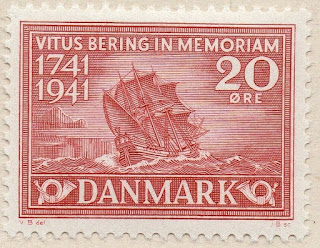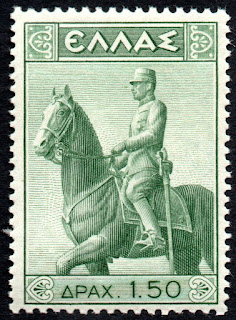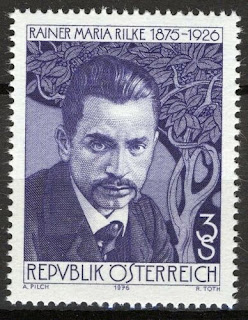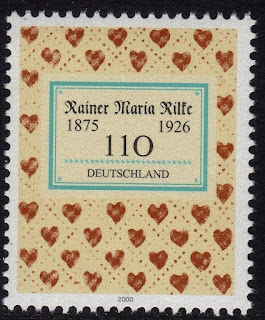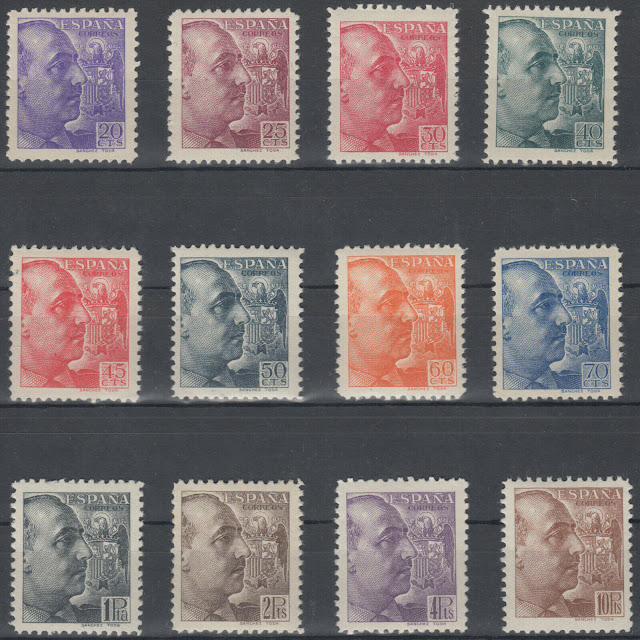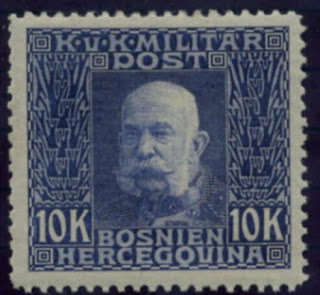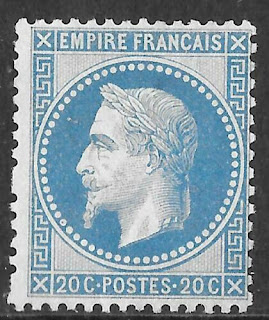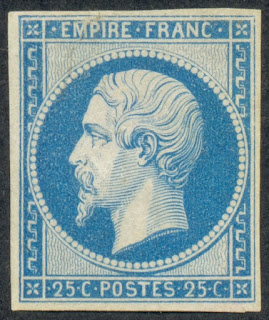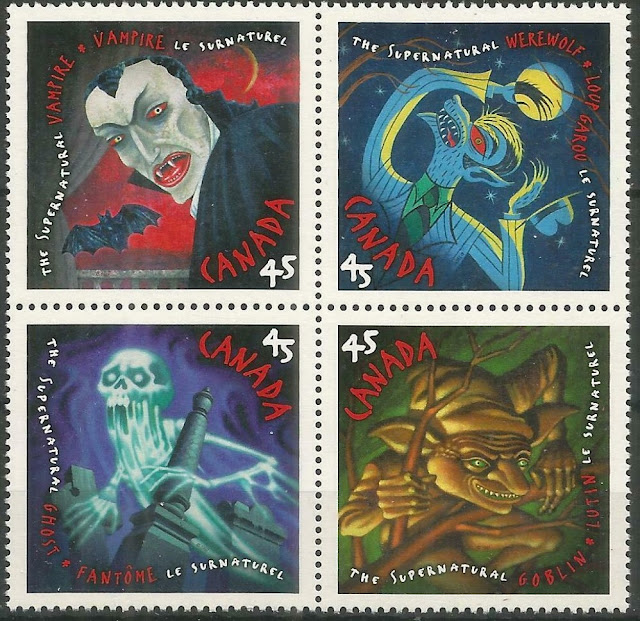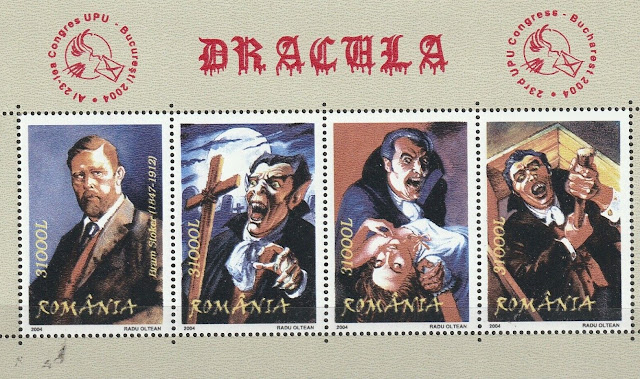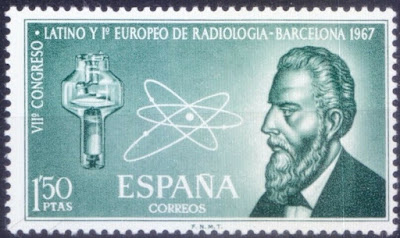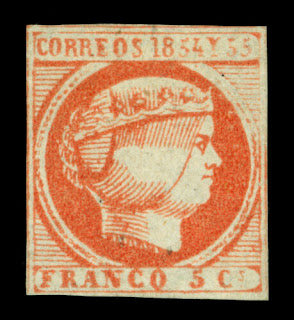Thursday, December 19, 2019
December 19th in stamps Bering, Alzheimer, Constantine I, Leonid Brezhnev
1741 Died: Vitus Bering, Danish-Russian hydrographer and explorer (b. 1681)
Vitus Jonassen Bering (baptised 5 August 1681, died 19 December 1741), also known as Ivan Ivanovich Bering, was a Danish cartographer and explorer in Russian service, and an officer in the Russian Navy. He is known as a leader of two Russian expeditions, namely the First Kamchatka Expedition and the Great Northern Expedition, exploring the north-eastern coast of the Asian continent and from there the western coast on the North American continent. The Bering Strait, the Bering Sea, Bering Island, the Bering Glacier and the Bering Land Bridge were all named in his honor.
Taking to the seas at the age of 18, Bering travelled extensively over the next eight years, as well as taking naval training in Amsterdam. In 1704, he enrolled with the rapidly expanding Russian navy of Tsar Peter I (Peter the Great). After serving with the navy in significant but non-combat roles during the Great Northern War, Bering resigned in 1724 to avoid the continuing embarrassment of his low rank to Anna, his wife of eleven years; and upon retirement was promoted to First Captain. Bering was permitted to keep the rank as he rejoined the Russian navy later the same year.
He was selected by the Tsar to captain the First Kamchatka Expedition, an expedition set to sail north from Russian outposts on the Kamchatka peninsula, with the charge to map the new areas visited and to establish whether Asia and America shared a land border. Bering departed from St. Petersburg in February 1725 as the head of a 34-man expedition, aided by the expertise of Lieutenants Martin Spangberg and Aleksei Chirikov. The party took on men as it headed towards Okhotsk, encountering many difficulties (most notably a lack of food) before arriving at the settlement. From there, the men sailed to the Kamchatka peninsula, preparing new ships there and sailing north (repeating a little-documented journey of Semyon Dezhnyov eighty years previously). In August 1728, Bering decided that they had sufficient evidence that there was clear sea between Asia and America, which he did not sight during the trip. For the first expedition, Bering was rewarded with money, prestige, and a promotion to the noble rank of Captain Commander. He immediately started preparations for a second trip.
Having returned to Okhotsk with a much larger, better prepared, and much more ambitious expedition, Bering set off for an expedition towards North America in 1741. While doing so, the expedition spotted Mount Saint Elias, and sailed past Kodiak Island. A storm separated the ships, but Bering sighted the southern coast of Alaska, and a landing was made at Kayak Island or in the vicinity. Adverse conditions forced Bering to return, but he documented some of the Aleutian Islands on his way back. One of the sailors died and was buried on one of these islands, and Bering named the island group Shumagin Islands after him. Bering himself became too ill to command his ship, which was at last driven to seek refuge on an uninhabited island in the Commander Islands group (Komandorskiye Ostrova) in the southwest Bering Sea. On 19 December 1741 Vitus Bering died on the island, which was given the name Bering Island after him, near the Kamchatka Peninsula, reportedly from scurvy (although this has been contested), along with 28 men of his company.
Stamps from Russia and Denmark depicting Bering and the Bering Sea
1915 Died: Alois Alzheimer, German psychiatrist and neuropathologist (b. 1864)
Aloysius Alzheimer (also known as Alois Alzheimer; June 14, 1864 – December 19, 1915) was a German psychiatrist and neuropathologist and a colleague of Emil Kraepelin. Alzheimer is credited with identifying the first published case of "presenile dementia", which Kraepelin would later identify as Alzheimer's disease.
Alzheimer discussed his findings on the brain pathology and symptoms of presenile dementia publicly on 3 November 1906, at the Tübingen meeting of the Southwest German Psychiatrists. The attendees at this lecture seemed uninterested in what he had to say. The lecturer that followed Alzheimer was to speak on the topic of "compulsive masturbation", which the audience was so eagerly awaiting that they sent Alzheimer away without any questions or comments on his discovery of the pathology of a type of senile dementia.
Following the lecture, Alzheimer published a short paper summarizing his lecture; in 1907 he wrote a larger paper detailing the disease and his findings. The disease would not become known as Alzheimer's disease until 1910, when Kraepelin named it so in the chapter on "Presenile and Senile Dementia" in the 8th edition of his Handbook of Psychiatry. By 1911, his description of the disease was being used by European physicians to diagnose patients in the US.
Stamps from USA, Denmark and Spain issued to raise awareness to Alzheimer's disease
1920 – King Constantine I is restored as King of the Hellenes after the death of his son Alexander of Greece and a plebiscite.
Constantine I (2 August 1868 – 11 January 1923) was King of Greece from 1913 to 1917 and from 1920 to 1922. He was commander-in-chief of the Hellenic Army during the unsuccessful Greco-Turkish War of 1897 and led the Greek forces during the successful Balkan Wars of 1912–1913, in which Greece expanded to include Thessaloniki, doubling in area and population. He succeeded to the throne of Greece on 18 March 1913, following his father's assassination.
His disagreement with Eleftherios Venizelos over whether Greece should enter World War I led to the National Schism. Constantine forced Venizelos to resign twice, but in 1917 he left Greece, after threats by the Entente forces to bombard Athens; his second son, Alexander, became king. After Alexander's death, Venizelos' defeat in the 1920 legislative elections, and a plebiscite in favor of his return, Constantine was reinstated. He abdicated the throne for the second and last time in 1922, when Greece lost the Greco-Turkish War of 1919–1922, and was succeeded by his eldest son, George II. Constantine died in exile four months later, in Sicily.
Greek stamps depicting Constantine I
1906 Born: Leonid Brezhnev, Ukrainian-Russian marshal, engineer, and politician, 4th Head of State of the Soviet Union (d. 1982)
Leonid Ilyich Brezhnev (19 December 1906 – 10 November 1982) was a Soviet politician. The fifth leader of the Soviet Union, he served as General Secretary of the Central Committee of the governing Communist Party of the Soviet Union (CPSU) from 1964 until his death in 1982. His 18-year term as general secretary was second only to Joseph Stalin's in duration. While Brezhnev's rule was characterized by political stability and notable foreign policy successes, it was also marked by corruption, inefficiency, and rapidly growing technological gaps with the West.
Brezhnev's conservative, pragmatic approach to leadership significantly stabilized the position of the Soviet Union and its ruling party. Whereas Khrushchev routinely disregarded the rest of the Politburo while exercising his authority, Brezhnev was careful to minimize dissent among the Party membership by reaching decisions through consensus. Additionally, while pushing for détente between the two Cold War superpowers, he achieved Soviet nuclear parity with the United States and legitimized his country's hegemony over Eastern Europe. Furthermore, the massive arms buildup and widespread military interventionism under Brezhnev's regime significantly expanded the Soviet Union's global influence (particularly in the Middle East and Africa).
Conversely, Brezhnev's hostility to political reform ushered in an era of societal decline known as the Brezhnev Stagnation. In addition to pervasive corruption and falling economic growth, this period was characterized by an increasing technological gap between the Soviet Union and the West. Upon coming to power in 1985, Mikhail Gorbachev denounced Brezhnev's government for its pervasive inefficiency and inflexibility before implementing policies to liberalize the Soviet Union.
After 1975, Brezhnev's health rapidly deteriorated and he increasingly withdrew from international affairs. Following years of declining health, he died on 10 November 1982 and was succeeded as general secretary by Yuri Andropov.
Stamps from Russia and East Germany depicting Leonid Brezhnev
Wednesday, December 04, 2019
December 4th in stamps Galvani, Hafstein, Franco, Rainer Maria Rilke
1875 Born: Rainer Maria Rilke, Austrian poet and author (d. 1926)
René Karl Wilhelm Johann Josef Maria Rilke (4 December 1875 – 29 December 1926), better known as Rainer Maria Rilke, was a Bohemian-Austrian poet and novelist. He is "widely recognized as one of the most lyrically intense German-language poets". He wrote both verse and highly lyrical prose. Several critics have described Rilke's work as "mystical". His writings include one novel, several collections of poetry and several volumes of correspondence in which he invokes images that focus on the difficulty of communion with the ineffable in an age of disbelief, solitude and anxiety. These themes position him as a transitional figure between traditional and modernist writers.
Rilke travelled extensively throughout Europe (including Russia, Spain, Germany, France and Italy) and, in his later years, settled in Switzerland – settings that were key to the genesis and inspiration for many of his poems. While Rilke is most known for his contributions to German literature, over 400 poems were originally written in French and dedicated to the canton of Valais in Switzerland. Among English-language readers, his best-known works include the poetry collections Duino Elegies (Duineser Elegien) and Sonnets to Orpheus (Die Sonette an Orpheus), the semi-autobiographical novel The Notebooks of Malte Laurids Brigge (Die Aufzeichnungen des Malte Laurids Brigge), and a collection of ten letters that was published after his death under the title Letters to a Young Poet (Briefe an einen jungen Dichter). In the later 20th century, his work found new audiences through use by New Age theologians and self-help authors and frequent quotations by television programs, books and motion pictures. In the United States, Rilke remains among the more popular, best-selling poets.
Austrian and German stamps depicting Rainer Maria Rilke
Francisco Franco Bahamonde(4 December 1892 – 20 November 1975) was a Spanish general and politician who ruled over Spain as Head of State and dictator under the title Caudillo from 1939, after the Nationalist victory in the Spanish Civil War, until his death in 1975. This period in Spanish history is commonly known as Francoist Spain or the Francoist dictatorship.
On 1 October 1936, in Burgos, Franco was publicly proclaimed as Generalísimo of the National army and Jefe del Estado (Head of State). When Mola was killed in another air accident a year later (which some believe was an assassination) (2 June 1937), no military leader was left from those who organized the conspiracy against the Republic between 1933 and 1935
Franco remains a controversial figure in Spanish history, but it is worth noting that the nature of his dictatorship changed over time. His reign was marked by both brutal repression, with thousands killed, and economic prosperity, which greatly improved the quality of life in Spain. Franco's dictatorial style proved very adaptable, which could introduce social and economic reform, and the only consistent points in Franco's long rule were above all authoritarianism, Spanish nationalism, national Catholicism, anti-Freemasonry, and anti-communism.
Monday, December 02, 2019
December 2nd in stamps Hernán Cortés, Franz Joseph, Napoleon III, Pedro II of Brazil
Hernán Cortés de Monroy y Pizarro Altamirano, Marquis of the Valley of Oaxaca (1485 – December 2, 1547) was a Spanish Conquistador who led an expedition that caused the fall of the Aztec Empire and brought large portions of what is now mainland Mexico under the rule of the King of Castile in the early 16th century. Cortés was part of the generation of Spanish colonizers who began the first phase of the Spanish colonization of the Americas.
Born in Medellín, Spain, to a family of lesser nobility, Cortés chose to pursue adventure and riches in the New World. He went to Hispaniola and later to Cuba, where he received an encomienda (the right to the labor of certain subjects). For a short time, he served as alcalde (magistrate) of the second Spanish town founded on the island. In 1519, he was elected captain of the third expedition to the mainland, which he partly funded. His enmity with the Governor of Cuba, Diego Velázquez de Cuéllar, resulted in the recall of the expedition at the last moment, an order which Cortés ignored.
Arriving on the continent, Cortés executed a successful strategy of allying with some indigenous people against others. He also used a native woman, Doña Marina, as an interpreter. She later bore his first son. When the Governor of Cuba sent emissaries to arrest Cortés, he fought them and won, using the extra troops as reinforcements. Cortés wrote letters directly to the king asking to be acknowledged for his successes instead of being punished for mutiny. After he overthrew the Aztec Empire, Cortés was awarded the title of Marqués del Valle de Oaxaca, while the more prestigious title of Viceroy was given to a high-ranking nobleman, Antonio de Mendoza. In 1541 Cortés returned to Spain, where he died six years later of natural causes but embittered.
Because of the controversial undertakings of Cortés and the scarcity of reliable sources of information about him, it is difficult to describe his personality or motivations. Early lionizing of the conquistadores did not encourage deep examination of Cortés. Modern reconsideration has done little to enlarge understanding regarding him. As a result of these historical trends, descriptions of Cortés tend to be simplistic, and either damning or idealizing.
1848 – Franz Joseph I becomes Emperor of Austria.
Franz Joseph I or Francis Joseph I (German: Franz Joseph I.; 18 August 1830 – 21 November 1916) was Emperor of Austria, King of Hungary, King of Bohemia, and monarch of many other states of the Austro-Hungarian Empire, from 2 December 1848 to his death. From 1 May 1850 to 24 August 1866 he was also President of the German Confederation. He was the longest-reigning Emperor of Austria and King of Hungary, as well as the third-longest-reigning monarch of any country in European history, after Louis XIV of France and Johann II of Liechtenstein.
In December 1848, Emperor Ferdinand abdicated the throne at Olomouc, as part of Minister President Felix zu Schwarzenberg's plan to end the Revolutions of 1848 in Hungary. This allowed Ferdinand's nephew Franz Joseph to accede to the throne. Largely considered to be a reactionary, Franz Joseph spent his early reign resisting constitutionalism in his domains. The Austrian Empire was forced to cede its influence over Tuscany and most of its claim to Lombardy–Venetia to the Kingdom of Piedmont-Sardinia, following the Second Italian War of Independence in 1859 and the Third Italian War of Independence in 1866. Although Franz Joseph ceded no territory to the Kingdom of Prussia after the Austrian defeat in the Austro-Prussian War, the Peace of Prague (23 August 1866) settled the German Question in favour of Prussia, which prevented the Unification of Germany from occurring under the House of Habsburg.
Franz Joseph was troubled by nationalism during his entire reign. He concluded the Austro-Hungarian Compromise of 1867, which granted greater autonomy to Hungary and transformed the Austrian Empire into the Dual Monarchy of Austria-Hungary. He ruled peacefully for the next 45 years, but personally suffered the tragedies of the execution of his brother, the Emperor Maximilian of Mexico in 1867, the suicide of his only son and heir-apparent, Crown Prince Rudolf, in 1889, the assassination of his wife, Empress Elisabeth, in 1898, and the assassination of his nephew and heir-presumptive, the Archduke Franz Ferdinand, in 1914.
After the Austro-Prussian War, Austria-Hungary turned its attention to the Balkans, which was a hotspot of international tension because of conflicting interests with the Russian Empire. The Bosnian Crisis was a result of Franz Joseph's annexation of Bosnia and Herzegovina in 1908, which had been occupied by his troops since the Congress of Berlin (1878).
On 28 June 1914, the assassination of his nephew and heir-presumptive, Archduke Franz Ferdinand, in Sarajevo resulted in Austria-Hungary's declaration of war against the Kingdom of Serbia, which was an ally of the Russian Empire. That activated a system of alliances which resulted in World War I.
Franz Joseph died on 21 November 1916, after ruling his domains for almost 68 years as one of the longest-reigning monarchs in modern history. He was succeeded by his grandnephew Charles.
Stamps from Austria, Hungary and Bosnia depicting Franz Joseph I
1852 – Louis-Napoléon Bonaparte becomes Emperor of the French as Napoleon III.
Napoleon III (born Charles-Louis Napoléon Bonaparte; 20 April 1808 – 9 January 1873), the nephew of Napoleon I, was the first President of France from 1848 to 1852, and the last French monarch from 1852 to 1870. First elected president of the French Second Republic in 1848, he seized power in 1851, when he could not constitutionally be re-elected, and became the Emperor of the French. He founded the Second French Empire and was its only emperor until the defeat of the French army and his capture by Prussia and its allies in the Franco-Prussian War in 1870. He worked to modernize the French economy, rebuilt the center of Paris, expanded the overseas empire, and engaged in the Crimean War and the Second Italian War of Independence.
Napoleon III commissioned the grand reconstruction of Paris, carried out by his prefect of the Seine, Baron Haussmann. He launched similar public works projects in Marseille, Lyon and other French cities. Napoleon III modernized the French banking system, greatly expanded and consolidated the French railway system and made the French merchant marine the second largest in the world. He promoted the building of the Suez Canal and established modern agriculture, which ended famines in France and made France an agricultural exporter. Napoleon III negotiated the 1860 Cobden–Chevalier free trade agreement with Britain and similar agreements with France's other European trading partners. Social reforms included giving French workers the right to strike and the right to organize. The first women students were admitted at the Sorbonne, and women's education greatly expanded as did the list of required subjects in public schools.
In foreign policy, Napoleon III aimed to reassert French influence in Europe and around the world. He was a supporter of popular sovereignty and of nationalism. In Europe, he allied with Britain and defeated Russia in the Crimean War (1853–56). His regime assisted Italian unification by defeating the Austrian Empire in the Franco-Austrian War, and as its deferred reward later annexed Savoy and the County of Nice. At the same time, his forces defended the Papal States against annexation by Italy. Napoleon III doubled the area of the French overseas empire in Asia, the Pacific and Africa, however his army's intervention in Mexico, which aimed to create a Second Mexican Empire under French protection, ended in total failure.
From 1866, Napoleon had to face the mounting power of Prussia as its Chancellor Otto von Bismarck sought German unification under Prussian leadership. In July 1870, Napoleon entered the Franco-Prussian War without allies and with inferior military forces. The French army was rapidly defeated and Napoleon III was captured at the Battle of Sedan. The French Third Republic was proclaimed in Paris and Napoleon went into exile in England, where he died in 1873.
Some stamps of France and France Colonies general issues depicting Emperor Napoleon III
1825 Born: Pedro II of Brazil (d. 1891)
Dom Pedro II (English: Peter II; 2 December 1825 – 5 December 1891), nicknamed "the Magnanimous", was the second and last monarch of the Empire of Brazil, reigning for over 58 years. He was born in Rio de Janeiro, the seventh child of Emperor Dom Pedro I of Brazil and Empress Dona Maria Leopoldina and thus a member of the Brazilian branch of the House of Braganza. His father's abrupt abdication and departure to Europe in 1831 left the five year-old as Emperor and led to a grim and lonely childhood and adolescence, obliged to spend his time studying in preparation for rule. He knew only brief moments of happiness and encountered few friends of his age. His experiences with court intrigues and political disputes during this period greatly affected his later character; he grew into a man with a strong sense of duty and devotion toward his country and his people, yet increasingly resentful of his role as monarch.
Pedro II inherited an empire on the verge of disintegration, but he turned Brazil into an emerging power in the international arena. The nation grew to be distinguished from its Hispanic neighbors on account of its political stability, zealously guarded freedom of speech, respect for civil rights, vibrant economic growth, and form of government—a functional representative parliamentary monarchy. Brazil was also victorious in the Platine War, the Uruguayan War, and the Paraguayan War, as well as prevailing in several other international disputes and domestic tensions. Pedro II steadfastly pushed through the abolition of slavery despite opposition from powerful political and economic interests. A savant in his own right, the Emperor established a reputation as a vigorous sponsor of learning, culture, and the sciences, and he won the respect and admiration of people such as Charles Darwin, Victor Hugo, and Friedrich Nietzsche, and was a friend to Richard Wagner, Louis Pasteur, and Henry Wadsworth Longfellow, among others.
There was no desire for a change in the form of government among most Brazilians, but the Emperor was overthrown in a sudden coup d'état that had almost no support outside a clique of military leaders who desired a form of republic headed by a dictator. Pedro II had become weary of emperorship and despaired over the monarchy's future prospects, despite its overwhelming popular support. He did not allow his ouster to be opposed and did not support any attempt to restore the monarchy. He spent the last two years of his life in exile in Europe, living alone on very little money.
The reign of Pedro II thus came to an unusual end—he was overthrown while highly regarded by the people and at the pinnacle of his popularity, and some of his accomplishments were soon brought to naught as Brazil slipped into a long period of weak governments, dictatorships, and constitutional and economic crises. The men who had exiled him soon began to see in him a model for the Brazilian republic. A few decades after his death, his reputation was restored and his remains were returned to Brazil with celebrations nationwide. Historians have regarded the Emperor in an extremely positive light and several have ranked him as the greatest Brazilian.
Friday, November 08, 2019
November 8th in stamps Wilhelm Röntgen, Bram Stoker, Witte de With
1658 Died: Witte de With, Dutch admiral (b. 1599)
Witte Corneliszoon de With (28 March 1599 – 8 November 1658) was a Dutch naval officer. He is noted for planning and participating in a number of naval battles during the Eighty Years War and the First Anglo-Dutch war.
In the Eighty Years' War against the Spanish, De With fought at the Battle of the Downs (1639). De With became very jealous of Tromp's popularity after his destruction of the Spanish fleet in The Downs. In the same battle, he made an enemy of Zealandic Vice-Admiral Johan Evertsen and accused him of cowardice and avarice.
Witte de With on stamps issued by the Netherlands and Sint Maarten
Abraham "Bram" Stoker (8 November 1847 – 20 April 1912) was an Irish author, best known today for his 1897 Gothic novel Dracula. During his lifetime, he was better known as the personal assistant of actor Sir Henry Irving, and business manager of the Lyceum Theatre in London, which Irving owned.
Stoker visited the English coastal town of Whitby in 1890, and that visit was said to be part of the inspiration for Dracula. He began writing novels while working as manager for Henry Irving and secretary and director of London's Lyceum Theatre, beginning with The Snake's Pass in 1890 and Dracula in 1897. During this period, Stoker was part of the literary staff of The Daily Telegraph in London, and he wrote other fiction, including the horror novels The Lady of the Shroud (1909) and The Lair of the White Worm (1911). He published his Personal Reminiscences of Henry Irving in 1906, after Irving's death, which proved successful, and managed productions at the Prince of Wales Theatre.
Before writing Dracula, Stoker met Ármin Vámbéry, a Slovak-Jewish writer and traveler (born in Szent-György, Kingdom of Hungary now Svätý Jur, Slovakia),. Dracula likely emerged from Vámbéry's dark stories of the Carpathian mountains. Stoker then spent several years researching Central and East European folklore and mythological stories of vampires.
The 1972 book In Search of Dracula by Radu Florescu and Raymond McNally claimed that the Count in Stoker's novel was based on Vlad III Dracula. At most however, Stoker borrowed only the name and "scraps of miscellaneous information" about Romanian history, according to one expert, Elizabeth Miller; further, there are no comments about Vlad III in the author's working notes.
Dracula is an epistolary novel, written as a collection of realistic but completely fictional diary entries, telegrams, letters, ship's logs, and newspaper clippings, all of which added a level of detailed realism to the story, a skill which Stoker had developed as a newspaper writer. At the time of its publication, Dracula was considered a "straightforward horror novel" based on imaginary creations of supernatural life. "It gave form to a universal fantasy ... and became a part of popular culture."
Stamps from Canada, Ireland and Romania depicting Bram Stoker's Dracula
1895 – While experimenting with electricity, Wilhelm Röntgen discovers the X-ray.
Wilhelm Conrad Röntgen (27 March 1845 – 10 February 1923) was a German mechanical engineer and physicist, who, on 8 November 1895, produced and detected electromagnetic radiation in a wavelength range known as X-rays or Röntgen rays, an achievement that earned him the first Nobel Prize in Physics in 1901. In honour of his accomplishments, in 2004 the International Union of Pure and Applied Chemistry (IUPAC) named element 111, roentgenium, a radioactive element with multiple unstable isotopes, after him.
Today, in Remscheid-Lennep, 40 kilometers east of Düsseldorf, the town in which Röntgen was born in 1845 is the Deutsches Röntgen-Museum.
In Würzburg, where he discovered the X-rays, a non-profit organization maintains his laboratory and provides guided tours to the Röntgen Memorial Site.
World Radiology Day: The International Day of Radiology is an annual event promoting the role of medical imaging in modern healthcare. It is celebrated on 8 November each year, coincides with the anniversary of the discovery of X-rays by Wilhelm Roentgen in 1895. It was first introduced in 2012, as a joint initiative, by the European Society of Radiology (ESR), the Radiological Society of North America (RSNA), and the American College of Radiology (ACR).
Röntgen Peak in Antarctica is named after Wilhelm Röntgen
Stamps from India, Germany and Spain depicting Wilhelm Röntgen
Thursday, October 10, 2019
October 10th in stamps Tasman, Isabella II, Carinthian plebiscite
1659 Died: Abel Tasman, Dutch merchant and explorer (b. 1603)
Abel Janszoon Tasman (1603 – 10 October 1659) was a Dutch seafarer, explorer, and merchant, best known for his voyages of 1642 and 1644 in the service of the Dutch East India Company (VOC). He was the first known European explorer to reach the islands of Van Diemen's Land (now Tasmania) and New Zealand, and to sight the Fiji islands.
Tasman's ten-month voyage in 1642–43 had significant consequences. By circumnavigating Australia (albeit at a distance) Tasman proved that the small fifth continent was not joined to any larger sixth continent, such as the long-imagined Southern Continent. Further, Tasman's suggestion that New Zealand was the western side of that Southern Continent was seized upon by many European cartographers who, for the next century, depicted New Zealand as the west coast of a Terra Australis rising gradually from the waters around Tierra del Fuego. This theory was eventually disproved when Captain Cook circumnavigated New Zealand in 1769.
1830 Born: Isabella II of Spain (d. 1904)
Isabella II (Spanish: Isabel; 10 October 1830 – 9 April 1904), also known as La de los Tristes Destinos or the One with the Sad Destinies, was Queen of Spain from 1833 until 1868. She came to the throne as an infant, but her succession was disputed by the Carlists, whose refusal to recognize a female sovereign led to the Carlist Wars. After a troubled reign, she was deposed in the Glorious Revolution of 1868, and formally abdicated in 1870. Her son, Alfonso XII, became king in 1874.
Stamps from Spain and the Spanish Philippines depicting Isabella II
1920 – The Carinthian plebiscite determines that the larger part of the Duchy of Carinthia should remain part of Austria.
The Carinthian plebiscite (German: Kärntner Volksabstimmung, Slovene: Koroški plebiscit) was held on 10 October 1920 in the area predominantly settled by Carinthian Slovenes. It determined the final southern border between the Republic of Austria and the newly formed Kingdom of Serbs, Croats and Slovenes (Yugoslavia) after World War I.
The outcome of the plebiscite held on 10 October, was 22,025 votes (59.1% of the total cast) in favor of adhesion to Austria and 15,279 (40.9%) in favor of annexation by the Kingdom of the Serbs, Croats, and Slovenes. Assumed that the whole German-speaking minority had voted for Austria, also every second Carinthian Slovene had decided to remain with the Republic. While a majority in the remote Alpine villages on the slopes of the Karawanks range voted for Yugoslavia, the inhabitants of the densely settled Klagenfurt Basin were motivated by their evolved social and cultural, not least economic ties to the central Carinthian region.
After the Austrian option had gained a majority of votes in predominantly Slovene Zone A, the second stage of the referendum in northern Zone B, populated chiefly by German speakers, was not carried out. Another Yugoslav foray was fiercely rejected by the Entente powers. The Carinthian Plebiscite region was placed under Austrian administration on 18 November 1920 and declared part of the sovereign Austrian Republic on November 22. Up to today, October 10 is a public holiday in the State of Carinthia.
The plebiscite ultimately determined the border between Austria and the Kingdom of Serbs, Croats, and Slovenes. The border remained unchanged after World War II, even as the Kingdom of Yugoslavia gave way to Josip Broz Tito's Socialist Federal Republic of Yugoslavia, though at the end of the war Yugoslav Partisans again briefly occupied the area, including the capital city of Klagenfurt. Since the disintegration of Yugoslavia, the border has separated Austria and Slovenia.
Austrian stamps commemorating 30 years since the Carinthian plebiscite

